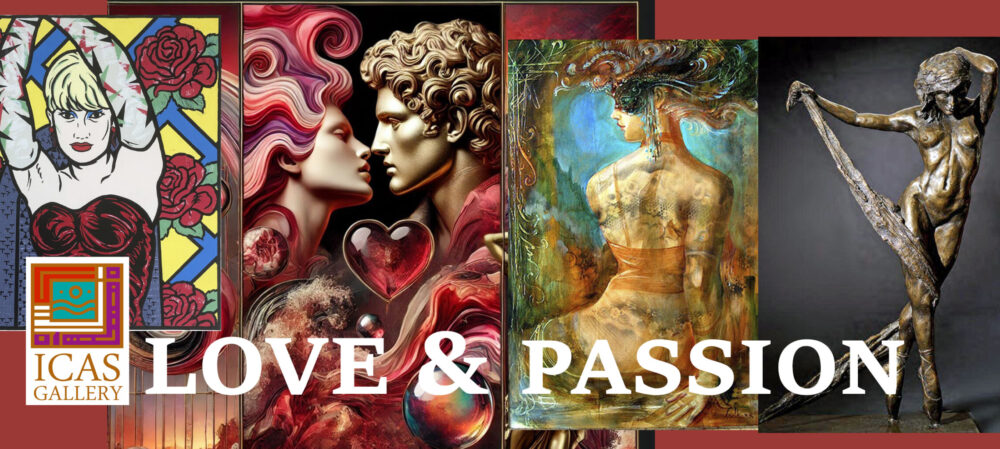We ask the question, John W. Mills. Q1. How can one observe the relationship between sculpture & its environment?

 Any sculpture should be able to attract interest from afar and sustain that interest in the spectator as the work is approached, up to the moment of touching, when only the surface texture can be read. A sculpture with a solid and exciting silhouette will cause a person to stop and consider investigating further. If strong idiosyncratic forms appear as the work approaches, further curiosity will tempt the spectator closer. With every step closer, more exciting features are revealed, demanding precise examination, maintaining and stimulating our interest. The artist has done all that can be asked of his work. No matter the idiom, abstract or figurative, heroic or miniature, this criterion will endure and prove to be a helpful yardstick for studying sculpture.
Any sculpture should be able to attract interest from afar and sustain that interest in the spectator as the work is approached, up to the moment of touching, when only the surface texture can be read. A sculpture with a solid and exciting silhouette will cause a person to stop and consider investigating further. If strong idiosyncratic forms appear as the work approaches, further curiosity will tempt the spectator closer. With every step closer, more exciting features are revealed, demanding precise examination, maintaining and stimulating our interest. The artist has done all that can be asked of his work. No matter the idiom, abstract or figurative, heroic or miniature, this criterion will endure and prove to be a helpful yardstick for studying sculpture.
Some works may thrust their personal story behind their work, and others hold more secrets, causing the viewer to observe more and investigate deals with significant contemplative effort. So do not judge that which is not immediately apparent, and do not respect too hurriedly that which seems so straightforward.
Q2. How do we look at sculptures differently indoors or in tight spaces?
 Sculpture exhibited in the open creates a different response to the experience of viewing that work in an enclosed space under artificial lights. One can be dramatic, highlighting the subject theatrically, compared to the constant movement of natural light and elements of drama. Auguste Rodin considered the changing of natural light on the surface of the bronze sculpture to be the effects of nature that the Impressionist painters sought to render. Form and detail are alternately obscured and exposed, plunged into shadow and highlighted by sunlight, bringing life to the observation of the work.
Sculpture exhibited in the open creates a different response to the experience of viewing that work in an enclosed space under artificial lights. One can be dramatic, highlighting the subject theatrically, compared to the constant movement of natural light and elements of drama. Auguste Rodin considered the changing of natural light on the surface of the bronze sculpture to be the effects of nature that the Impressionist painters sought to render. Form and detail are alternately obscured and exposed, plunged into shadow and highlighted by sunlight, bringing life to the observation of the work.
As we examine the complexity of the sculpture in more detail and its final placement, the surroundings of urban, suburban or countryside, the height of the work above ground and the distances to best observed approached. In my opinion, figurative work can be dwarfed by the surroundings unless it is heroic, and huge nonfigurative pieces convey to seem puny by a large landscape. Therefore, it is crucial to question the scale and proportion of the sculpture, not the size, controlled by the relationship. For instance, by reducing the size of a head on a figure to less than that of regular human proportion, the image will have a scale that, when viewed in isolation, will make it appear more significant than life, no matter what actual size. This scaling process helps our brains distinguish the optical effect of looking at a tall figure. This observation skill also relates to those images that use the human, animal, or organic world as source material. Therefore, abstract work or formal idioms will use geometry, applied intuitive, to gain that subject juxtaposition of form to the location to correct the scale relative to the site.
Seen against a natural background, the perceived stability of sculpture becomes an interesting phenomenon. The constant movement of leaves and branches, sea or sky, emphasises the stable nature of the sculpture. Against such a background, an excellent figurative work, well placed, will create empathy in the spectator with the image and its situation. Imagining lightly or unclad figures standing silently in galeforce winds or snow-laden thigh-deep in winter is interesting. The image has a positive force if this sympathetic reaction is in you. Alternatively, imagine a work, first confronted in a quiet country landscape, transferred to a busy urban environment. According to the subject and placement, the image’s sense of authority will create an empathetic response.
JOHN W. MILLS
 We welcome an enquiry about John W. Mills investment collection or for all private or corporate commissions. Please book an appointment to discuss your inquiry in more detail, or call us. Direct contact Sunil Vilas,
We welcome an enquiry about John W. Mills investment collection or for all private or corporate commissions. Please book an appointment to discuss your inquiry in more detail, or call us. Direct contact Sunil Vilas,ICAS Vilas Art Gallery
21 Commerce Way
Garden Square Shopping Centre, Letchworth Garden City SG6 3DNPhone: 01462677455
Email: info@vilasart.co.uk
ICAS Vilas Art Gallery
Garden Square Shopping Centre,
Email: info@vilasart.co.uk
ART NEWS VIDEOS & PUBLICATION
My Sculptures have allowed me to meet members of The Royal Family, which has always been an exciting and enjoyable experience.
”Dancing is creating a sculpture visible only for a moment.”



